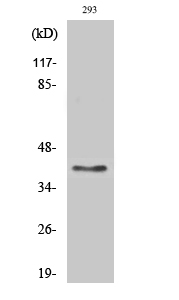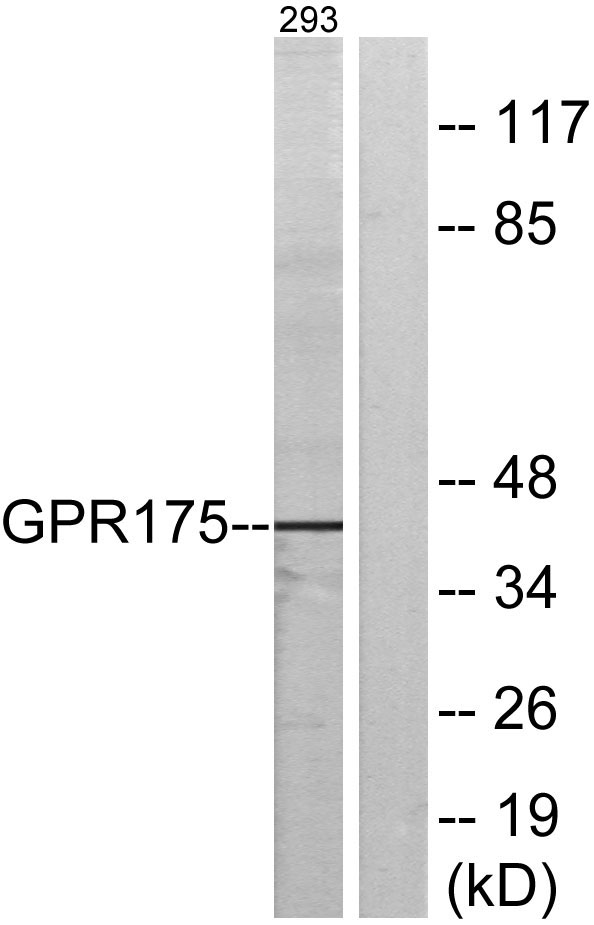GPR175 Polyclonal Antibody
- Catalog No.:YT2002
- Applications:WB;IF;ELISA
- Reactivity:Human;Mouse;Rat
- Target:
- GPR175
- Gene Name:
- TPRA1
- Protein Name:
- Transmembrane protein adipocyte-associated 1
- Human Gene Id:
- 131601
- Human Swiss Prot No:
- Q86W33
- Mouse Gene Id:
- 24100
- Mouse Swiss Prot No:
- Q99MU1
- Rat Gene Id:
- 85494
- Rat Swiss Prot No:
- Q791F6
- Immunogen:
- The antiserum was produced against synthesized peptide derived from human GPR175. AA range:198-247
- Specificity:
- GPR175 Polyclonal Antibody detects endogenous levels of GPR175 protein.
- Formulation:
- Liquid in PBS containing 50% glycerol, 0.5% BSA and 0.02% sodium azide.
- Source:
- Polyclonal, Rabbit,IgG
- Dilution:
- WB 1:500 - 1:2000. IF 1:200 - 1:1000. ELISA: 1:20000. Not yet tested in other applications.
- Purification:
- The antibody was affinity-purified from rabbit antiserum by affinity-chromatography using epitope-specific immunogen.
- Concentration:
- 1 mg/ml
- Storage Stability:
- -15°C to -25°C/1 year(Do not lower than -25°C)
- Other Name:
- TPRA1;GPR175;PP6566;Transmembrane protein adipocyte-associated 1;Integral membrane protein GPR175
- Observed Band(KD):
- 41kD
- Background:
- TPRA1 is a gene on chromosome 3q21.3 that encodes transmembrane protein adipocyte-associated 1 expressed in most tissues, especially in heart, placenta and kidney, and plays role in lipid metabolism and in ageing. Gene Ontology (GO) annotations related to this gene include G-protein coupled receptor activity.
- Function:
- aging,
- Subcellular Location:
- Membrane; Multi-pass membrane protein.
- Expression:
- Ubiquitous, with higher levels in heart, placenta and kidney.
- June 19-2018
- WESTERN IMMUNOBLOTTING PROTOCOL
- June 19-2018
- IMMUNOHISTOCHEMISTRY-PARAFFIN PROTOCOL
- June 19-2018
- IMMUNOFLUORESCENCE PROTOCOL
- September 08-2020
- FLOW-CYTOMEYRT-PROTOCOL
- May 20-2022
- Cell-Based ELISA│解您多样本WB检测之困扰
- July 13-2018
- CELL-BASED-ELISA-PROTOCOL-FOR-ACETYL-PROTEIN
- July 13-2018
- CELL-BASED-ELISA-PROTOCOL-FOR-PHOSPHO-PROTEIN
- July 13-2018
- Antibody-FAQs
- Products Images

- Western Blot analysis of various cells using GPR175 Polyclonal Antibody diluted at 1:2000

- Western blot analysis of lysates from 293 cells, using GPR175 Antibody. The lane on the right is blocked with the synthesized peptide.



